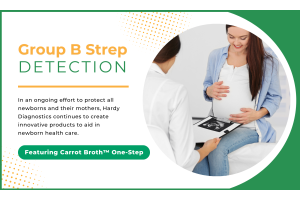Drug resistance on the rise... A Sinister Salmonella Strain
Salmonella Infantis
Globally, Salmonella causes illness in 93.8 million people and causes approximately 155,000 deaths each year.(1) Within the United States alone, Salmonella is responsible for 1.35 million infections, 26,000 of which are severe enough to warrant hospitalization and over 400 deaths.(2)
Infection occurs after ingesting more than 50,000 bacterial cells from contaminated food or water with symptoms appearing from 6 to 72 hours after consumption.(3) In addition, the actual morbidity rate worldwide is likely higher than reported, especially in developing countries.
Typically, the gastroenteritis will resolve itself in 5–7 days without need for treatment other than IV fluids. Antibiotics are usually contraindicated unless there is evidence of invasive disease (i.e. bacteremia) or typhoid fever, as antibiotics are unlikely to lessen the duration of illness or decrease the severity of symptoms and have the potential to increase bacterial antibiotic resistance.(3)
Typhoid fever is immediately treated with antibiotics, due to the systemic nature of the infection. Broad spectrum Fluoroquinolones (i.e. ciprofloxacin) have become the primary treatment, however resistance to this class of antimicrobials is increasing, as evidenced in studies conducted in endemic regions. Third generation cephalosporins are now often the second-line treatment for typhoid fever. Multiple Drug Resistant (MDR) strains are becoming increasingly more common, highlighting the need for better prophylactic therapeutics.(3)
Ninety-nine percent of all cases of salmonellosis are caused by S. enterica, and now a serovar of that species is causing great concern. Salmonella enterica serovar Infantis has been in the news lately for escalating anxiety levels of clinicians and the general population alike. Salmonella Infantis contains a multifaceted danger profile. Worldwide geographical distribution paired with multiple drug resistance genes are a combination befitting an infamous bacteria.(4,5,6) These characteristics of Salmonella Infantis make it challenging to investigate in the case of an outbreak.
For example, in 2019, a single outbreak of Salmonella Infantis from chicken resulted in 129 illnesses across 32 different states.(7) When the Centers for Disease Control and Prevention (CDC) launched the official investigation, 76 different chicken processing establishments showed the presence of Salmonella Infantis, which caused ambiguity as to the source of the outbreak. Further genetic analysis from 97 patients and 139 environmental samples showed that Salmonella Infantis contains resistance genes to many of the most commonly used broad-spectrum antibiotics.(7) Even with antibiotics and proper food handling, there is no guarantee of Salmonella-free chicken. The CDC estimates that one out of every twenty-five packs of chicken from the store is contaminated with Salmonella.(8)
The United States has one of the safest food supply chains globally. Still, the United States Department of Agriculture (USDA) regulatory authority begins at the slaughterhouse and does not have the labor force or authority to check all farming operations. The extensive presence of this pathogen paired with antibiotic resistance results in an alarming combination with a single solution. If you plan to eat chicken, you must store it properly -18ºC (0ºF) and thoroughly cook it to an internal temperature of 74ºC (165ºF).(8)One monitoring method for food products is to enrich samples in Buffered peptone water (Cat. no.U142) and plate to HardyCHROM Salmonella (Cat no. G309). Hardy Diagnostics also offers SS NoPRO (Cat. no. G327) agar to screen clinical samples to assist clinicians in getting the most accurate and expedited results. This plated media is especially useful in that Proteus, which can mimic Salmonella in appearance, will be inhibited, thus eliminating many false positives. Hardy Diagnostics is here to help by providing the best microbiological solutions for the food and clinical laboratories.
Works Cited: 1, 2, 3, 4, 5, 6, 7, 8
By Isaac Adelman
Technical Services Microbiologist
Hardy Diagnostics







